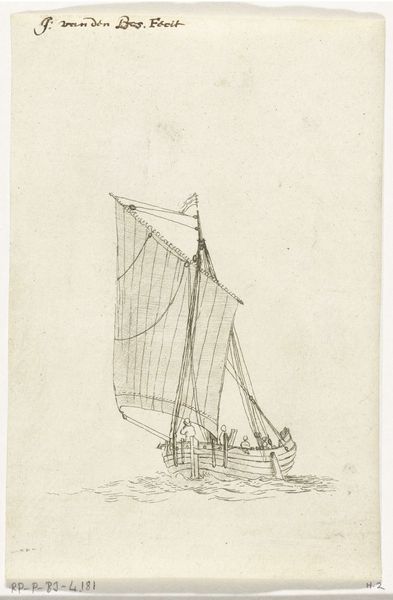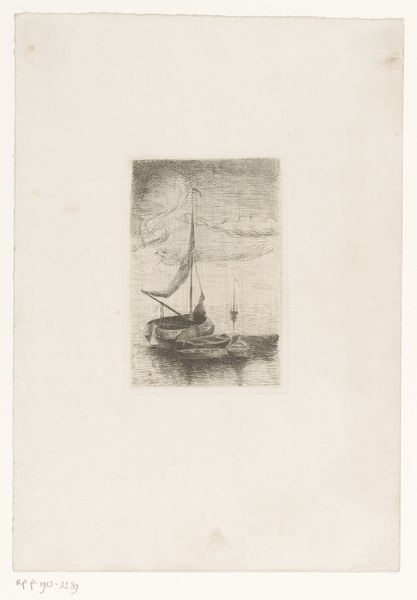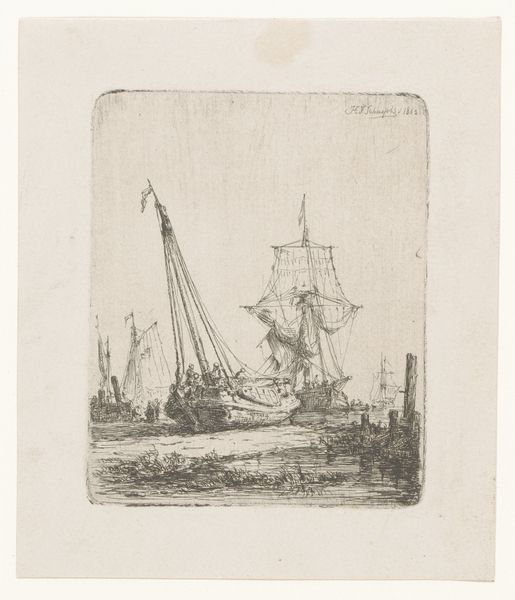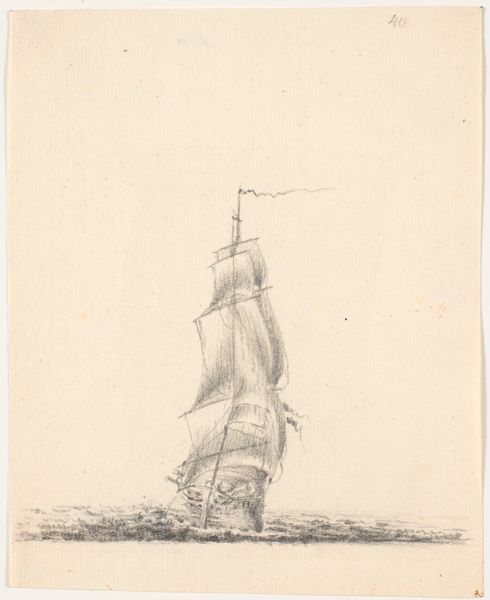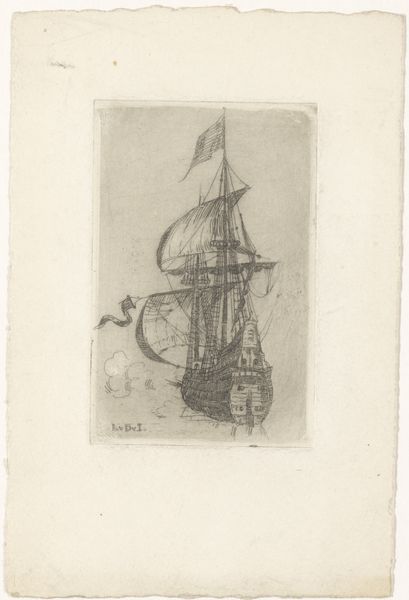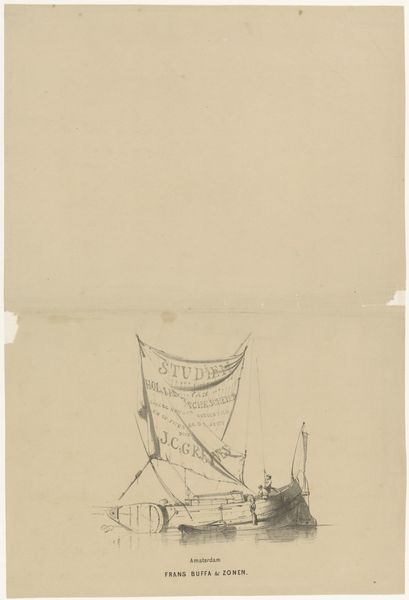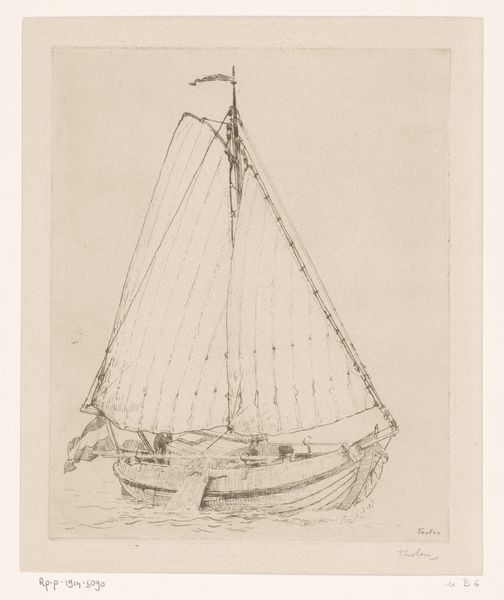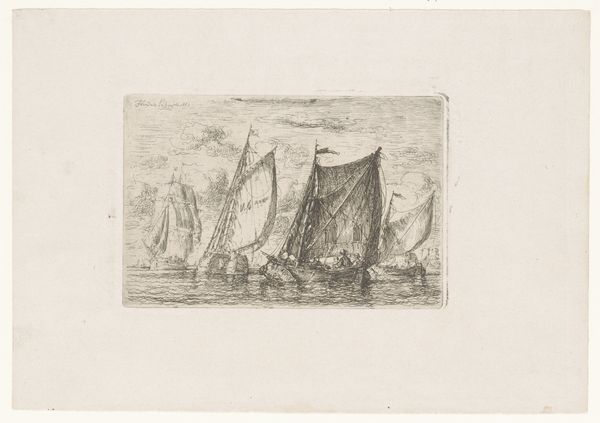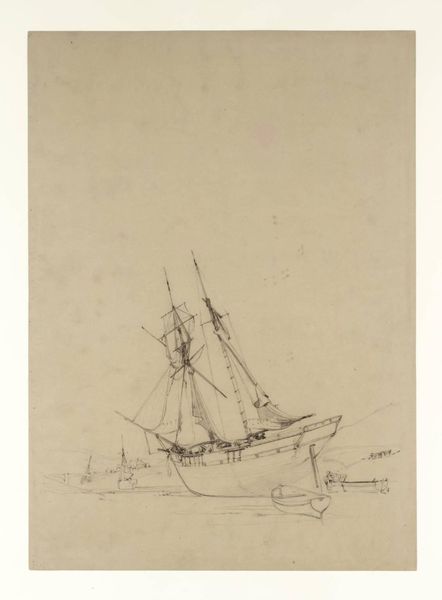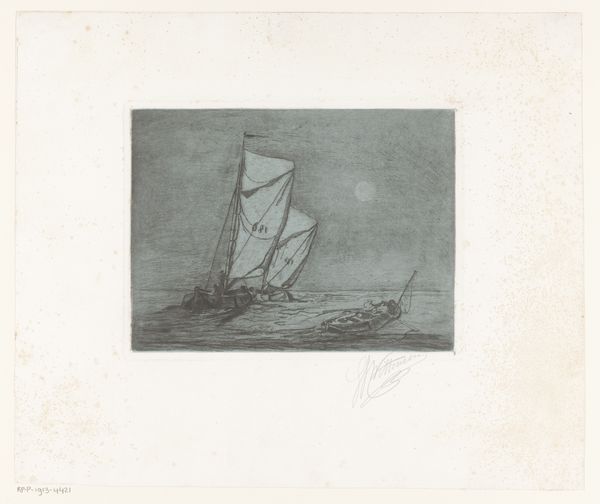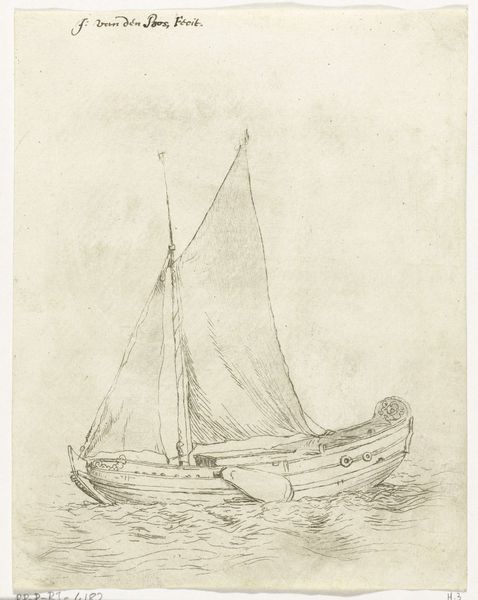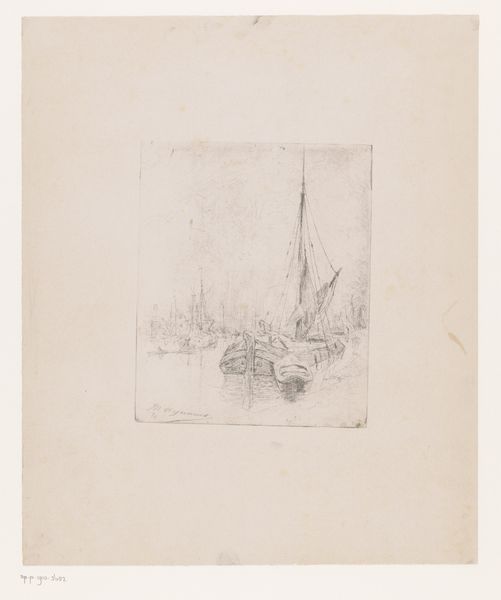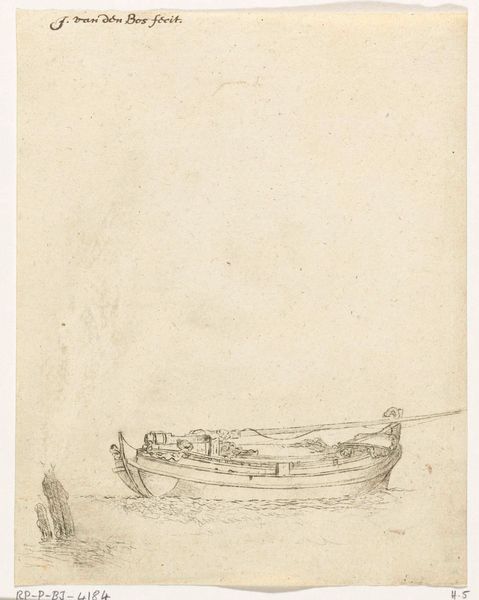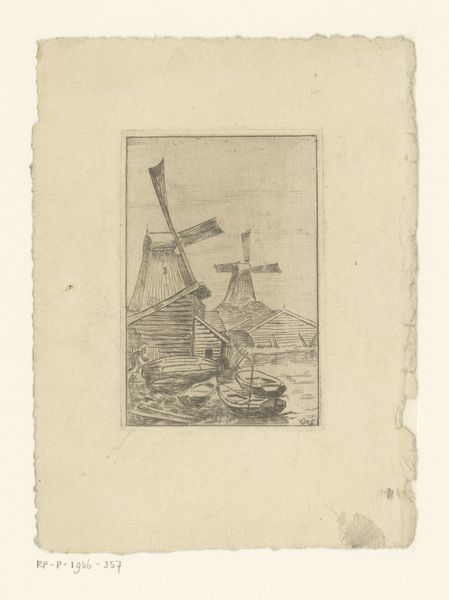
drawing, paper, pencil
#
drawing
#
pen sketch
#
pencil sketch
#
landscape
#
etching
#
paper
#
pencil
#
genre-painting
#
realism
Dimensions: height 340 mm, width 245 mm
Copyright: Rijks Museum: Open Domain
Curator: This pencil drawing by Johannes Koekkoek, created sometime between 1821 and 1831, offers us "Four Views of a Sailing Ship." What's your initial read? Editor: Well, there’s a certain lightness, a vulnerability. It feels more like a fleeting study than a definitive statement, particularly given its limited tonal range. I am struck by the realism here; these are practical watercraft, aren’t they? Curator: They are indeed. Consider, too, the cultural memory embedded in seafaring—exploration, trade, but also exploitation and colonial ambition, especially within Dutch history. Editor: Absolutely. This era coincides with burgeoning maritime activity. Boats were crucial. Here they’re sketched, but the drawing subtly reflects Dutch reliance on these vessels and, consequently, its legacy of power projected across water. It hints at social structures upheld by maritime industries, often built on the backs of laborers and enslaved people. Curator: Note the almost obsessive repetition of form—a single vessel examined from varying angles. Is Koekkoek purely concerned with capturing its physical presence? Or does it suggest something more? A fascination or need to master and understand these powerful floating entities. Editor: It invites thinking about accessibility too. Were images like these available to all members of Dutch society? Visual representation often reflected and reinforced the social and economic hierarchies. The depiction of a vessel could reinforce maritime power, who could afford to be represented with them, and the role of the subjugated in achieving this status. Curator: Good point. The simplicity belies complex layers of meaning. It’s an image deeply connected to Dutch national identity. It serves to represent historical narratives which still demand attention. Editor: Agreed. Art allows us to visualize the roots of inequity. Thinking critically about that is paramount when engaging with artwork from the era, however "simple" they seem on their surface. Curator: It’s humbling to see how one small sketch can reverberate across time. Editor: A testament to the enduring strength of visual language, right? I hope it continues to spark productive conversations.
Comments
No comments
Be the first to comment and join the conversation on the ultimate creative platform.
